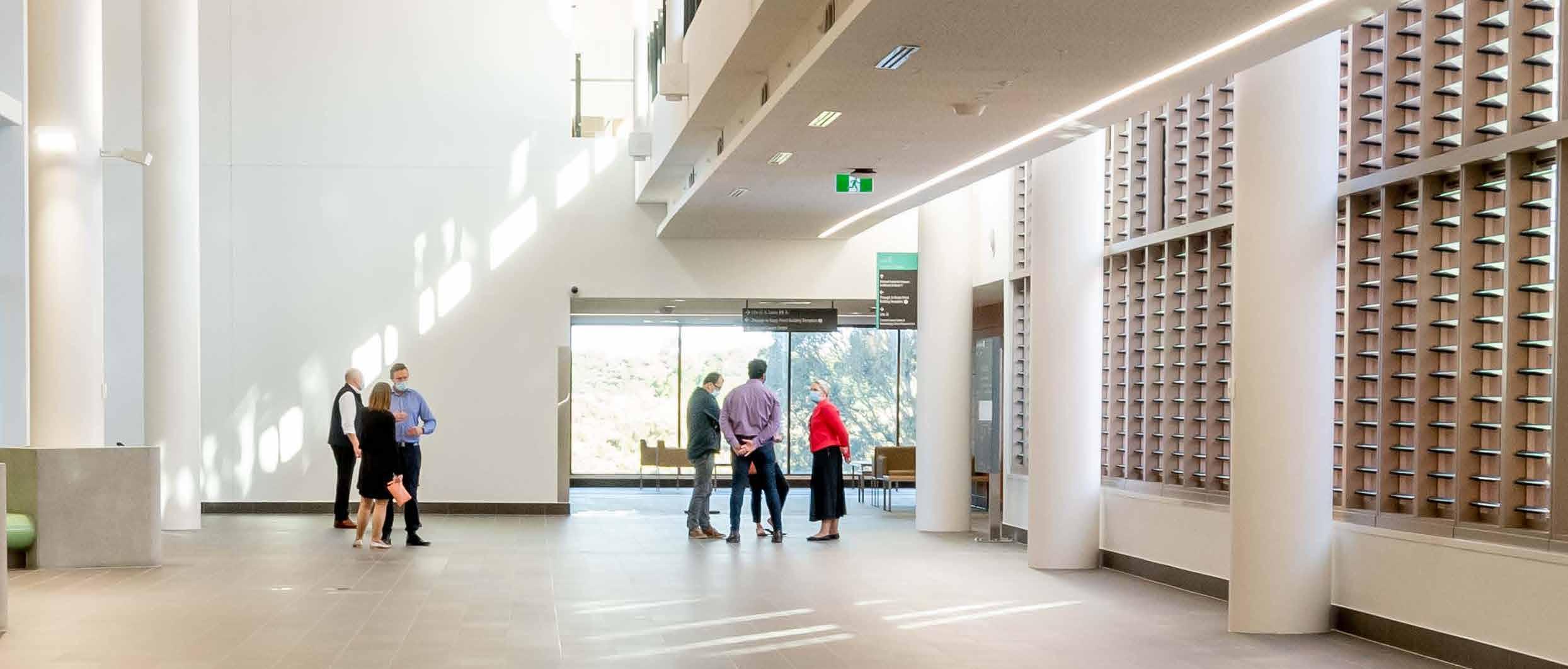
1 minute read
Figure 3
Workers were recruited to participate in the survey via the Roberts Co. site smartphone app, which featured a Project 5 widget that directed workers to the survey on the UNSW website (Figure 3).
Researchers from UNSW Sydney also attended the site in person to introduce workers to the research study and encourage participation. The research team found that workers did not respond to reminders to participate sent via the smartphone app, leading the research team to attend the sites more regularly and telephone workers to encourage them to complete the survey over the phone. Phase 2 . Next of kin survey and interviews Workers were invited to nominate their next of kin to take part in the research. Next of kin were contacted by researchers via SMS. Those who consented to participate were sent a link to an online survey and given the option to undertake two interviews, conducted four to six months apart. Next of kin interviews took place from March 2020 to January 2021. The timing was designed to capture potential changes in their relationships and wellbeing. The survey and interviews focused on four areas of wellbeing (as noted above), plus the effect on the next of kin’s employment, gender roles and preferred working conditions for construction workers.
Advertisement
Figure 3. Participant recruitment via the Roberts Co. smartphone app Phase 3 . Economic evaluation
The final evaluation method, the economic evaluation, tested the cost effectiveness of the intervention from an employer and employee perspective. The economic evaluation drew on secondary data from Roberts Co. including safety data, scheduling and financial data as well as key data from the survey findings.
Phase 4 . Interviews with project and construction industry stakeholders From May 2021, project and construction industry stakeholders were interviewed about the five-day work week. Project stakeholders included Roberts Co.’s CEO and Head of Operations, the Concord Hospital Redevelopment Project Director and Site Supervisor, a Health Infrastructure NSW representative and two subcontractors representing structures and services trades. Industry stakeholders included representatives from industry membership groups (NSW Master Builders, Australian Contractors Association, Property Council of Australia), a trade union representative and industry groups focused on mental health (Foundation House and Mates in Construction). Interviews focused on three areas (1) the context, establishment, and execution of the intervention, (2) learnings and insights and (3) future directions and interventions.


